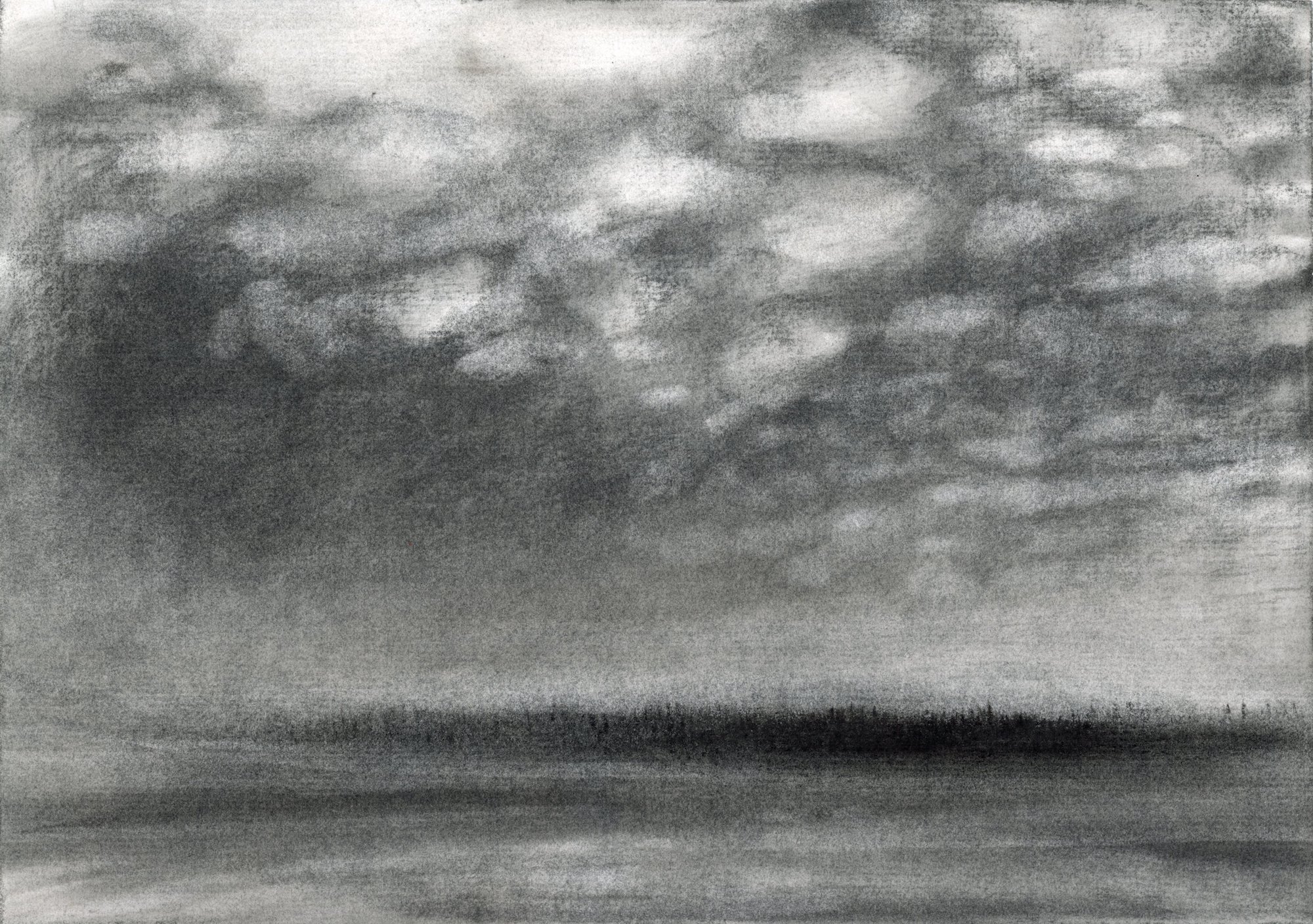Communities on the Cranberry Isles, an archipelago off the coast of Maine named for its yearly cranberry harvests, have lived at the border of marine life for generations as boatbuilders and fishermen, enjoying the abundance of the islands. Since the 1920s, however, its population of year-round residents has steadily declined, while its rate of vacationers has grown. Today, three of the five islands are completely uninhabited by permanent residents. But as Lauret Savoy writes in her book Trace: Memory, History, Race, and the American Landscape (2016), “Memory of all forms becomes inscribed in the land.”
The late Emily Nelligan, who passed away in 2018, was one such visitor who left a trace on the islands. Though she lived in Connecticut, she spent summers on Great Cranberry Island, a two-mile split of mountains enclosing a large bay known as the Pool, home to oysters and shellfish. Almost all of her charcoal drawings focused on the Cranberry Isles in a type of lifelong self-portrait. A show at Alexandre Gallery, Emily Nelligan: Early Drawings, features her works from between the 1950s and ’80s. The nearly identically sized compositions express mystical lifeforms similar to an enchanted Odilon Redon or disorienting Gustav Klimt. Entire compositions are overcome with grass or blanched with glints of sunlight.
During the Paleozoic era, lava flows brought up mountains. Intense pressure crystallized the heavy layer of rock below the island’s surface. Glacial transit shucked the earth, creating the coves and valleys that form the Maine landscape. Nelligan worked in charcoal to save money, but her mastery of the medium’s tonal shifts in shades of gray created scenes that suggest the primordial beginnings of the land. She darkens the paper without weighing it with gloom. “1 September 62” (1962) is foregrounded by orbs shifting from rocks to bubbles in the viewer’s eye backdropped by a mass of vague pines. She found the ethereal in the ancient; her drawings swirl like metamorphic rock.

Nelligan’s works are subdued in size, offering intimate windows into the landscape. Yet they refrain from orienting the viewer. Portions of the island are skewed or abstracted. In “Toward Manset” (1982), a black opening disappears into the drawing’s sides. The top of this void is textured with points like pines. Below, the dark gash smooths into ribbons of gray. Above, an interior light — one that seems to carry each of her compositions — glows. White ovals scallop into the distance. This is an island; these are clouds and water — but here, they are mere shadows.
The specificity of her line drawings of individual plants contrasts with the abstraction of her landscapes. “Untitled” (1975), for instance, is one in a series of ink drawings of geranium plants. Leaves emerge from stems that are nearly bursting with nodes. While the viewer can barely differentiate one location from the next in her depictions of land masses, the veins of these leaves are clear enough to be maps.
Her triptych “Woods near Preble Cove” (1982) is nothing but trunks of trees repeating along three narrow sheets of paper. The sense of place is confounding; the trees are nowhere. They grow like echoes of themselves. There is no sign of life. Yet the shadows and light pulsate. With a turn of the wind, someone could walk from the trees. Nelligan tends to the land with the intimate repetition of a lifelong student. It is as if she could, with a slight blush of gray, filter away the millennia and reveal all the life of the place at once.


Emily Nelligan: Early Drawings continues at Alexandre Gallery (25 East 73rd Street, Upper East Side, Manhattan, through November 16). The exhibition was organized by the gallery.

